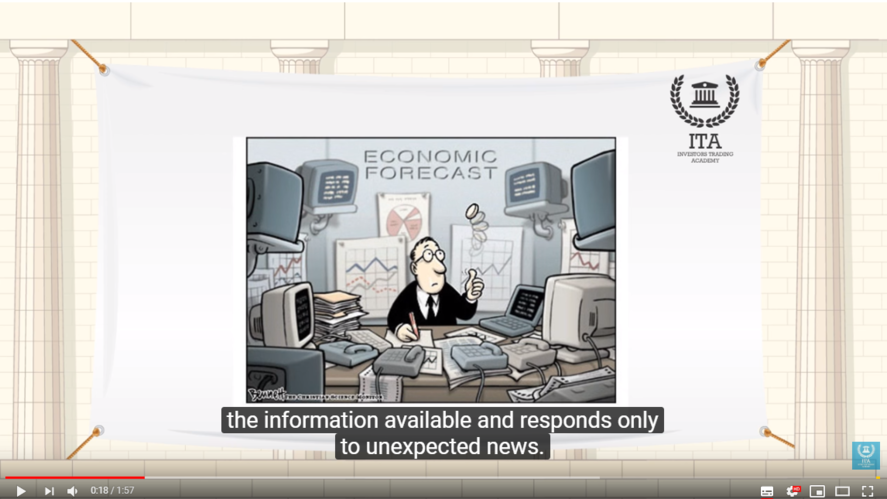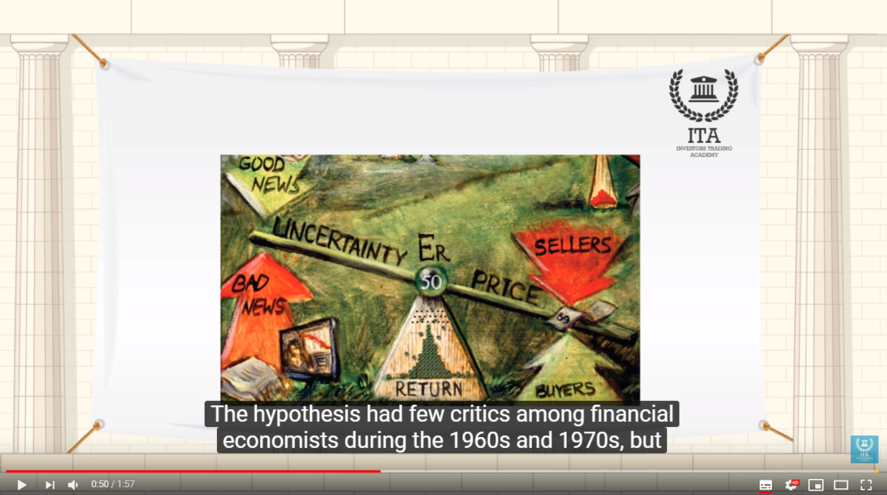About the Efficient Market Theory
One of the most important concepts in financial economics is the Efficient Market Hypothesis (see the video: What is The Efficient Market Hypothesis - EMH?). It states that when investors endowed with different information about a firm meet in the stock market to trade the firm’s shares, all these different pieces of information will be incorporated into the share market price thanks to the force of supply and demand. Hence, even those who trade in the stock market without any particular knowledge about the firm, know that the transaction price will be fair as it aggregates the opinion of more informed or more skilled investors.
The transaction price will be fair as it aggregates the opinion of more informed or more skilled investors.
Financial market microstructure is a branch of financial economics that analyzes the stock price formation process using the lenses of game theory. Existing studies in this field have demonstrated that the information efficiency hypothesis is theoretically plausible.
The assumptions today of price formation and more
However, to come to this conclusion, most of these studies had to base their analysis on the simplifying assumption that precisely those who set the price in the stock market, i.e. market makers and dealers, share the exact same information about the asset’s fundamentals.
In reality, each dealer has access to different information.
Yet, in reality, each dealer has access to different information, so can we say that market efficiency is plausible in general, i.e., no matter whether dealers have the same information or not? Existing theories have not answered this question.
Efficient Market Theory: what existing theories don’t say
In our research paper, we analyze the price formation process without recurring to any ad-hoc simplifying assumption about the information of dealers. To this purpose first, we distinguish between the relatively few agents that are consistently present in a given market, such as dealers or market makers, from the many agents who intervene occasionally in that market, such as traders or funds managers.
Second, we identify equilibria, which do not depend on what each single dealer believes about the firm’s fundamentals, i.e. belief-free equilibria. In these equilibria, dealers make money over time, no matter what they think the fundamentals are, and no matter what the fundamentals actually are.
How is that possible? The equilibrium consists of alternation between exploring phases and exploiting phases. In exploring phases, dealers propose prices to probe the demand and supply coming from traders. These phases allow dealers to learn the level of prices: guaranteeing them, during exploiting phases, to buy cheap from potential sellers and sell expensive to potential buyers. Exploring phases are costly to dealers as they might face traders that are better informed than they are. However, these costs are more than compensated for by the profits accumulated during exploiting phases.
The equilibrium consists of alternation between exploring phases and exploiting phases. These phases allow dealers to learn the level of prices.
What does this imply for the Efficient Market Hypothesis? During the exploiting phase, demand and supply are balanced, implying that the price reflects market participants’ consensus about a firm’s fair value, and the efficient market assumption is satisfied. However, during the exploring phase, prices are volatile and will drift away from the firm’s fair value. The alternation of exploring and exploiting phase is inevitable; hence, there will be recurring periods in which the efficient market hypothesis is violated.
The alternation of exploring and exploiting phase is inevitable; hence, there will be recurring periods in which the efficient market hypothesis is violated.
More take-home points:
• Dealers do not make money by buying when they think that a stock is underpriced or by selling when they think it is overpriced. They keep their net position at minimum and make money through intermediating the demand and the supply of traders.
• No matter what a dealer thinks the fundamentals of an asset are, he will make more money, and take less risk, by going along with the market rather than betting against it.
• The theory explains dealers’ tendency to maintain balanced inventory.
• The theory helps explaining the excess volatility puzzle, that is, the fact that the volatility of the company’s stock price exceeds the volatility of its fundamentals.
• The theory explains the volatility clustering phenomenon that consists in the volatility of stock prices experiencing recurrent picks.
• The exploring-exploiting phase’s alternation is reminiscent of some algorithmic trading protocols.
The theory explains the volatility clustering phenomenon that consists in the volatility of stock prices experiencing recurrent picks.












